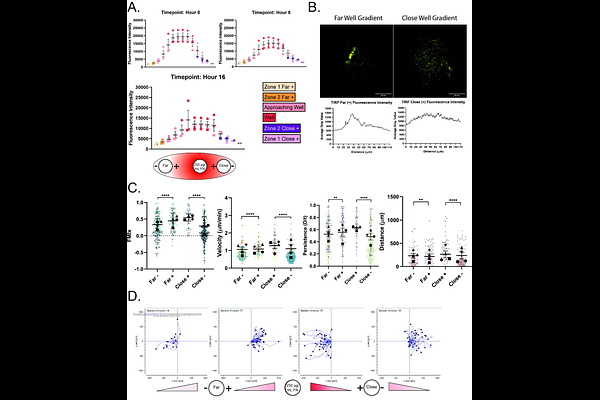Macrophages migrate persistently and directionally upon entering 2D confinement in the presence of extracellular matrix

Macrophages migrate persistently and directionally upon entering 2D confinement in the presence of extracellular matrix
Stinson, M. W.; Paulson, S. G.; Carlile, E. M.; Rotty, J. D.
AbstractCells sense and respond to their environment in a myriad of ways. In many instances they must integrate simultaneous cues ranging from the physical properties and composition of the extracellular matrix to guidance cues that stimulate chemotaxis or haptotaxis. How cells make sense of multiple simultaneous cues is an ongoing physiologically relevant question. The present study seeks to contribute to the understanding of multi-cue sensing by understanding how the transition to a confined setting with or without an added haptotactic gradient alters macrophage migration. We found that the transition to confinement is itself a directional cue capable of driving persistent migration hours after macrophages enter the confined environment. Next, we found that a haptotactic fibronectin gradient made cells even more directionally persistent under confinement. Finally, Arp2/3 complex deletion rendered macrophages unresponsive to the haptotactic gradient, but they retained directionally persistent migration due to their transition to confinement. These findings may be particularly relevant for cells that move from an adherent 2D environment into a confining 3D environment, like leukocytes and circulating tumor cells that extravasate into peripheral tissue.